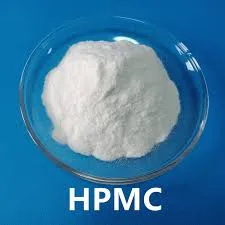
ágú . 08, 2024 02:45 Back to list
Understanding HS Codes for Redispersible Polymer Powders in International Trade and Commerce
Understanding Redispersible Polymer Powder and Its HS Code
Redispersible polymer powder (RDP) is an essential component used in various industries, including construction, coatings, and adhesives. It plays a crucial role in enhancing the performance properties of construction materials, such as cement-based products, by improving flexibility, adhesion, and water resistance. Given its importance, understanding RDP and its classification, particularly in terms of the Harmonized System (HS) code, is vital for importers, exporters, and manufacturers.
What is Redispersible Polymer Powder?
Redispersible polymer powder is a dry powder that can be redispersed in water to form a stable polymer emulsion. It is produced by spray-drying aqueous polymer dispersions. Common types of polymers used in RDP include vinyl acetate-ethylene (VAE), styrene-acrylic, and acrylic copolymers. When added to cementitious materials, RDP enhances their properties, making them suitable for various applications such as tile adhesives, self-leveling compounds, and exterior insulation and finish systems (EIFS).
The real value of RDP lies in its ability to improve the workability of dry mix products and provide superior performance characteristics. For instance, RDP imparts improved adhesion to substrates, flexibility, and resistance to water and freeze-thaw cycles. This makes materials containing RDP particularly desirable in regions facing extreme weather conditions.
Importance of HS Code Classification
The Harmonized System (HS) is an internationally standardized system of names and numbers for classifying traded products. Developed by the World Customs Organization (WCO), the HS code allows for the uniform categorization of goods across countries, facilitating international trade and legislation compliance. For businesses involved in the import and export of redispersible polymer powders, understanding its HS code is essential for several reasons
redispersible polymer powder hs code

1. Tariff and Taxation Each HS code is associated with specific tariff rates and tax regulations. Knowing the correct HS code for RDP ensures that businesses can accurately assess their trade costs and comply with local customs regulations.
2. Trade Statistics HS codes are used by governments and trade organizations to analyze trade flows. Accurate classification helps provide data on RDP trade patterns, which can inform policy decisions and business strategies.
3. Compliance and Risk Management Misclassification can lead to legal issues, fines, and delays in shipping. Understanding the appropriate HS code for RDP minimizes risks associated with non-compliance.
The HS Code for Redispersible Polymer Powder
While the HS code can vary by country, RDP is generally classified under Chapter 39 Plastics and articles thereof. Specifically, it often falls under HS codes such as 3909, which pertains to Artificial resins and plastic materials. However, it is essential for businesses to confirm the exact classification by checking with their local customs authorities or using legal resources to ensure compliance with the specific regulations applicable to their country.
Conclusion
In conclusion, redispersible polymer powder is an invaluable resource in the construction and coatings industries, emphasizing the need for proper handling, usage, and classification. Understanding its properties, applications, and the relevance of its HS code is critical for manufacturers, importers, and exporters alike. Not only does it aid compliance with trade regulations, but it also enhances business strategies in navigating the complexities of international commerce. As global trade continues to grow, staying informed about product classifications and their implications has never been more important.
-
The Widespread Application of Redispersible Powder in Construction and Building Materials
NewsMay.16,2025
-
The Widespread Application of Hpmc in the Detergent Industry
NewsMay.16,2025
-
The Main Applications of Hydroxyethyl Cellulose in Paints and Coatings
NewsMay.16,2025
-
Mortar Bonding Agent: the Key to Enhancing the Adhesion Between New and Old Mortar Layers and Between Mortar and Different Substrates
NewsMay.16,2025
-
HPMC: Application as a thickener and excipient
NewsMay.16,2025
-
Hec Cellulose Cellulose: Multi functional dispersants and high-efficiency thickeners
NewsMay.16,2025







